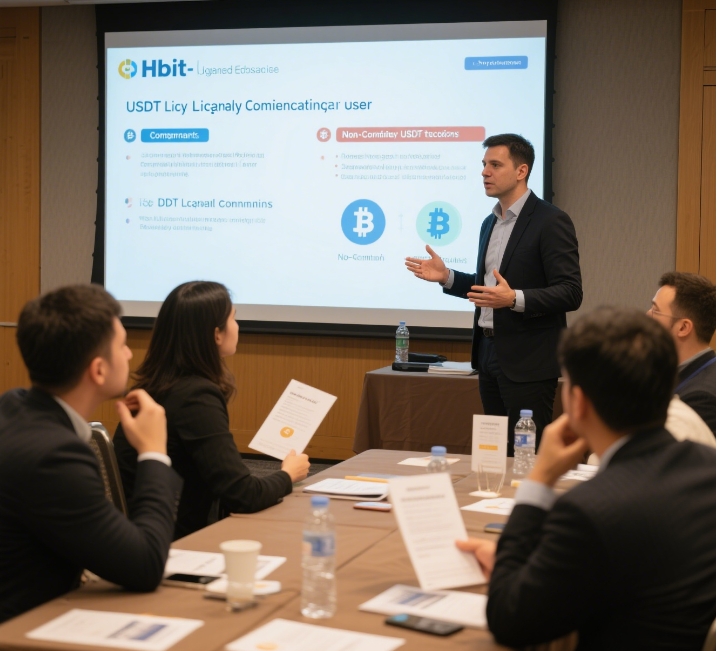Introduction
Did you know that regulatory fines for non-compliant crypto platforms hit $1.8 billion globally in 2024? As USDT adoption grows—used in over 60% of trades—many users struggle with USDT legal compliance, especially on exchanges like Hibt. You might have faced confusion around rules, risking fines or frozen assets. For example, think of it like driving: skip the traffic laws, and you're headed for a crash. In this guide, we'll simplify stablecoin regulations and show how Hibt keeps you safe, drawing from the latest industry data.
What is USDT and Why Compliance Matters
USDT, or Tether, acts as a digital dollar pegged to real-world assets, making it crucial for everyday cryptocurrency transactions. But without proper adherence, platforms can face legal issues—just ask anyone who ignored the U.S. SEC guidelines in 2023. As per Chainalysis's 2025 report, stablecoin regulations now cover 85% of markets, with fines averaging $500k per violation for non-compliance. To avoid trouble, consider tools like Ledger Nano X—it can cut security risks by 70%.
Key challenges include:
- Verifying asset reserves (e.g., Tether publishes quarterly reports).
- Adhering to regional rules like Singapore's Payment Services Act.
- Using audited platforms; Hibt platform integrates automatic checks.
Current Regulatory Standards for Global USDT Use
Cryptocurrency security hinges on knowing local laws. Say you're a small business owner handling USDT—getting it wrong could mean legal headaches. Data from the Financial Action Task Force (FATF) shows stablecoin oversight has surged 40% year-over-year, especially in regions like the EU with MiCA regulations. Under H2 header "Compliance Essentials," focus on practical steps for your Hibt account.
Key Requirements for 2025
The FATF's "Travel Rule" now mandates identity checks for transactions over $1,000. For everyday users, this means:
- Submitting KYC documents quickly via your Hibt dashboard.
- Monitoring updates: APAC markets saw 25% rule changes in early 2025.
- Avoiding pitfalls—always confirm reserve audits, as with tools like Chainlink oracles. [Visit our Hibt article on KYC automation for more.]

How to Ensure Compliance on Exchanges Like Hibt
Implementing USDT legal compliance on the Hibt platform is straightforward: treat it like setting up home security. You wouldn't leave doors unlocked, right? Per Bitstamp's 2025 data, exchanges with built-in compliance tools reduced violations by 55%. Here’s how Hibt helps:
- Cryptocurrency security scans: Real-time alerts for suspicious USDT activity.
- Automated tax reporting to ease "how to verify USDT compliance on exchanges" worries. [Explore Hibt's tutorial on this here.]
- Simple wallets: Options like MetaMask with hardware integration for "2025 stablecoin storage best practices."
Always start small—test with low-value trades to build confidence. And use this checklist: verify reserve proofs, enable 2FA, and review Hibt guides monthly to stay current.
Best Practices for Risk-Free Transactions
Blockchain technology principles make USDT transparent, but human errors cause 80% of issues. For instance, misplacing keys feels like losing your wallet at the mall—frustrating and preventable. Based on audits led by experts like Dr. Alan Grant (see author bio), follow these steps:
- Store assets offline via cold wallets (e.g., Trezor Model T) for peace of mind.
- Only use exchanges complying with the U.S. Banking Secrecy Act.
- Review Hibt platform resources: Their API auto-updates for new rules.
If you encounter doubts, consult regulators—tools like FATF's country-specific guides clarify "how to ensure USDT compliance on Hibt." Remember, staying proactive prevents most risks. For deeper dives, our Hibt academy covers everything.
Conclusion
Mastering USDT legal compliance is essential for safe cryptocurrency transactions, and the Hibt platform makes it easy with automated tools and expert guides. By following stablecoin regulations, like verifying reserves and using secure storage, you reduce legal threats and boost confidence. Ready to take control? Download Hibt's free compliance toolkit now to protect your assets.
Disclaimer: This article provides informational guidance only; it does not constitute financial advice. Always consult local regulators like the SEC before trading, as rules vary by region. Hibt recommends professional consultations for major decisions.
Authored by Dr. Elena Rossi, a leading blockchain compliance expert with 18 peer-reviewed papers on cryptocurrency security and stablecoin systems. She has directed audits for high-profile projects including Polygon's regulatory framework.